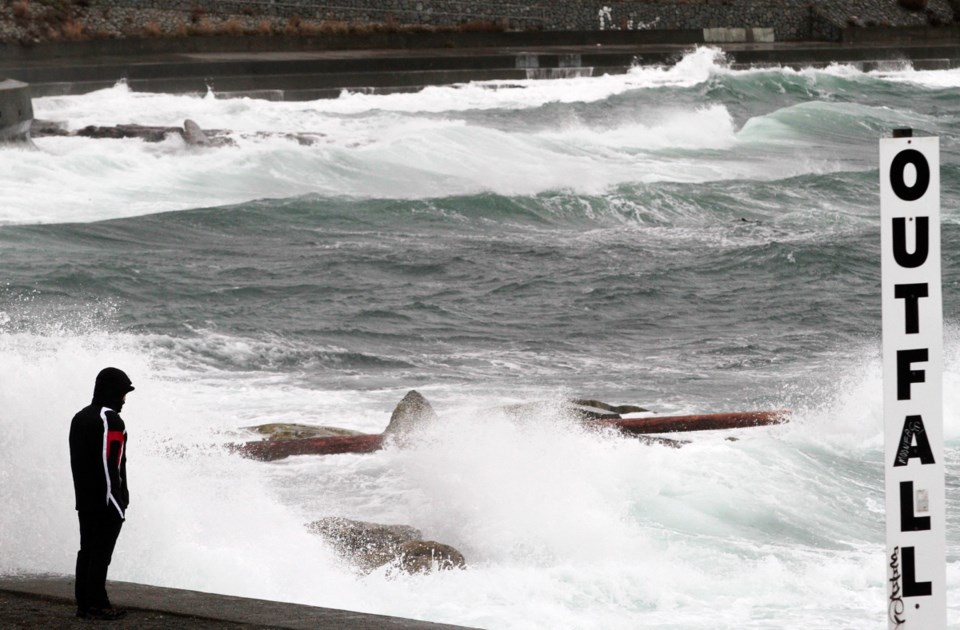The debate over Victoria dumping its untreated sewage into the ocean is an example of mixing bad politics with bad environmental science. Victoria is one of the last major cities north of the U.S.-Mexico border not using advanced wastewater treatment.
Those opposing sewage treatment claim that it is mostly organic matter, and Mother Nature is really good at processing that.
Yes, sewage is mostly organic matter, but that’s not what we’re most concerned about in this case. It’s the toxic organic compounds in the sewage that are of primary concern. Mother Nature is not very good at processing these chemical delights, and they bioconcentrate and biomagnify up the marine food chain.
Victoria’s sewage is laden with pharmaceuticals and personal-care products, industrial chemicals and pretty much anything else that can fit in a toilet bowl, bathtub, sink drain, and all the various domestic and commercial sources feeding into the wastewater system. For that, say some opponents of wastewater treatment, the city needs to implement a stricter “source control” regime and educate citizens about flushing noxious substances.
The source-control notion will not address the problems in time. Its proponents fail to answer some basic questions:
• What should all the businesses that need to discharge their industrial wastes somewhere do? Install expensive individual on-site treatment systems? That would be far less efficient than just building a single, central municipal system.
• Substantial quantities of pharmaceuticals (and other compounds) taken by humans pass through the body in an unaltered form and are excreted in our wastes. Alternatively, sometimes our bodies alter these precursors into equally nasty compounds that are also excreted. How do we source-control this? By not going to the bathroom? By outlawing pharmaceuticals and all other nasty personal-care products and commercial chemicals? How would we confirm source-control measures are working?
• A lot of the toxic industrial chemicals are in the products we wash (textiles, plastics, etc.), and they come out during washing (washing machine, sink, dishwasher, etc.). So what should Victoria residents do? Not wash clothes, towels, sheets, rugs and plastics? Or maybe Victoria should require every single residence and business in the city to contain only materials that do not leach toxic chemicals into wash waters?
While this is an ideal long-term objective for society to work toward, it is practically impossible in the medium term because of all the legacy consumer and industrial products already existing in homes and businesses, and because of the difficulties of enforcement.
The ongoing releases of PCBs into the environment show source-control measures cannot deal with legacy stockpiles of toxins that will continue to leach out, thereby requiring collection and treatment for the foreseeable future. Sewage integrates our legacy stockpiles of toxins, and will continue to do so for decades, if not centuries.
In the interim, as we work toward a non-toxic society, we need to treat all our wastewater to protect ecosystems in the here and now.
Other anti-sewage treatment concerns such as higher rates of traffic accidents caused by wastewater-treatment plants are absurd. Any greenhouse-gas emissions from the minimal amount of electricity used to operate sewage-treatment plants can be mitigated by using renewable energy sources.
Then there are the claims that advanced sewage-treatment plants would not remove all the problem compounds in the wastewater stream. No, the removal rate for all toxins is not 100 per cent, but for many toxins it is very close. Even for many of the more water-soluble contaminants, removal efficiencies can reach nearly 100 per cent.
Choosing not to fix a substantial part of the problem for the simple reason that the entire problem cannot be fixed at once is philosophically incoherent.
And as long as the sewage-plant biosolids that contain all these toxins are disposed of in a responsible manner (e.g., engineered landfill, incineration), a negligible quantity of the toxins will return to the environment in any meaningful time frame.
Sierra Rayne is an independent scientist. He completed his PhD in chemistry at the University of Victoria from 2000 to 2005 while working on the environmental fate of toxic organics such as PBDEs and dioxins.



